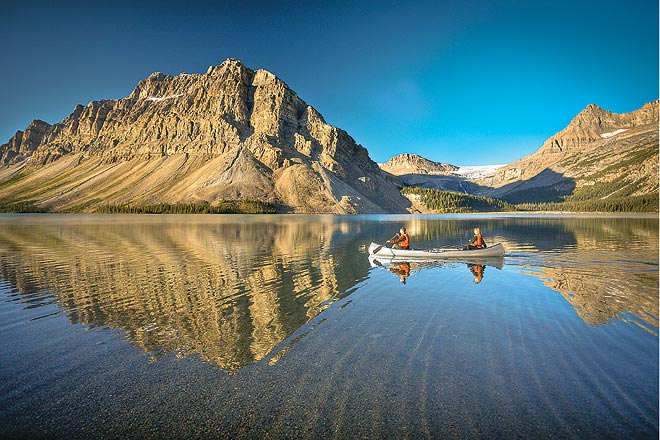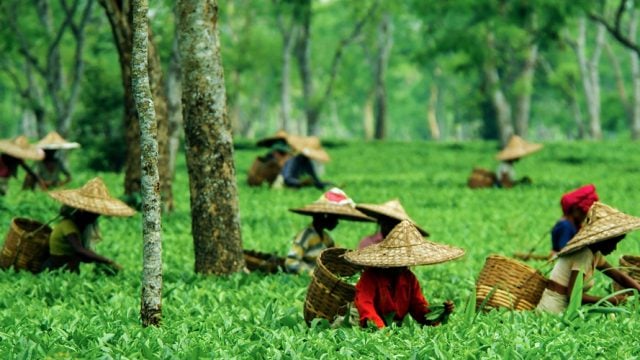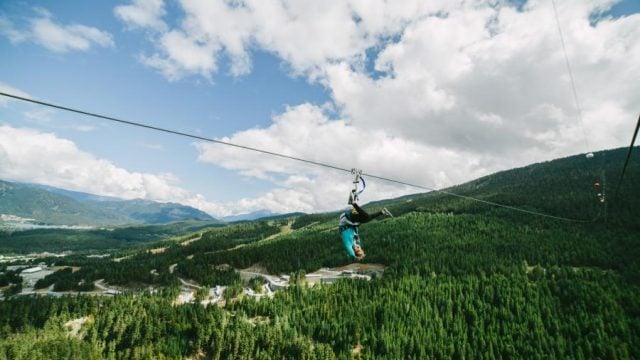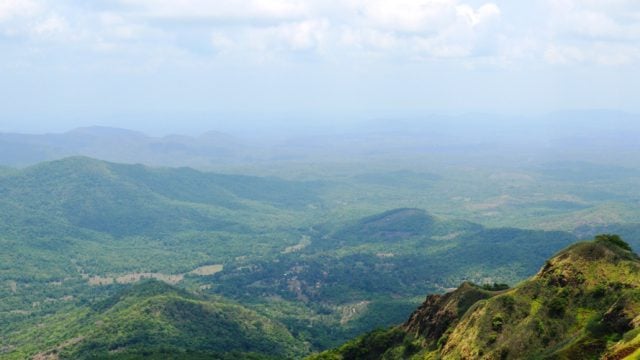Some years ago, I disembarked from a roller coaster ride in Orlando’s Disneyworld,
Vancouver, it turned out, is a perfectly safe city. We kicked off with a pretty drive down the seafront neighbourhoods of Kerrisdale and Shannessey, with halts at the historic English Bay and family-friendly Jericho Beach, although it’s the rainforest backdrop of Third Beach that’s most scenic (there’s also a Second Beach; someone was clearly feeling inspired). Mind, we were dawdling on the way in from the airport at Richmond because our rooms weren’t ready for a check-in yet. When you have been travelling 30 hours across time zones, it takes something extraordinary to be distracted from a shower and a bed.
There’s a subtlety about Vancouver — its cosmopolitanism, attractions and setting (in the middle of mountains, forests and an ocean deep) uniquely dramatic but looking the opposite. It’s soft-spoken, this not-even-capital of British Columbia that makes it to the world’s ‘most liveable cities’ list year after year, but not diffident, as we discovered at Flyover Canada, an immersive 4D experience. It had us cheering through an introduction to the northern nation’s spectacular geography, our feet dangling from elevated chairs inside a four-storey high spherical screen as we forded glaciers, swooped down prairies and bridged canyons. It’s open to anyone from ‘four to 104 years’ and I am happy to report that my nerves qualified.
Canada Place in downtown Vancouver is its most happening location for other reasons. A clutch of hotels makes it lively with visitors, many of them embarking on cruises to Alaska at the quayside here (the goose-bumpy ship’s horn of Disney’s ‘Wonder’ is When you wish upon a star). Liners dock right by the iconic sailboat installation here, pulling over as cars would into parking slots, on an ocean that looks like a lake. If you are lucky, as I was, to have rooms with a view, the bay is a happy thing to behold — outdoorsy locals jogging, cycling or setting out on boats, the drone of floatplane take-offs about the loudest thing to be heard. A panoramic flight in one of them is a popular outing. We tried this, grabbing window seats in a valiant bird that jolted and dipped through air pockets, flying towards the North Shore mountains and back over the harbour in less than 15 minutes, the water landing more fun than the flight itself.
Downtown Vancouver is very easy to get around — most locals walk to work in this pedestrian-friendly city, which wants to be the greenest in the world by 2020. The Jack Poole Plaza is at the heart of Canada Place — its glass installation, stylised like the shards of an icicle, was lit as a torch for the Winter Olympics and designed by the man whose name the spot carries. Just a couple of blocks away lies the historic Gas Town, named after ‘Gassy’ Jack Deighton, a Yorkshire seaman who opened the city’s first saloon and had a predilection for ribald jokes. This National Historic Site is terrific for a leisurely stroll in perfect weather, which we had. The days are marvellously long in the summer, the sun rising at five in the morning and setting only around ten in the night, the weather hill-stationy throughout.
There was nowhere better to enjoy a sunny day than Granville Island, off Vancouver but so connected that it seems to dangle like a wisp. Granville was once the hub of Vancouver’s industries till they withered in the late 1960s, giving way to divinely inspired redevelopment — the government handed the island over to artists and craftspeople at subsidised rents, giving it a new life and better meaning. Granville deserves an all-day hangout. Its popularity, with both locals and visitors, is unsurprising. Street-side musicians play in its squares (they have to audition for time slots), there are endless shops full of interesting stuff to browse or buy, a whole area is given over to local artists and their products, and another to shopping for kids. The public market is a lovely place to pick up dry fruits, nuts, sauces and maple syrup (and I wished I could have taken some of those fresh raspberries and blueberries home), its lively food court jammed with options for a quick bite. Head out and pick a chair by a square filled with noisy families, impromptu music and overfed seagulls. We didn’t want to leave, especially after a spot of kayaking around the island, not quite an Olympian effort in the still waters, although we whooped and raced as if it were.
Canadians like to say that they don’t have amusement parks — nature trails are their biggest thrills. The Capilano Suspension Bridge Park, 27 acres of old verdure, proves this true. The 450-feet span of a bridge safe enough to carry 86 elephants, they told us, stretches 230 feet over the Capilano River, swaying merrily as squealing visitors scamper over it. A privately-managed property, it features discreetly placed factoids and a bunch of things-to-do. I loved the Cliffwalk, a daring rock-side balcony with gorgeous mountain-canyon vistas, and a ‘treetops adventure’ connecting a series of massive Douglas firs with rope and wood (not a single nail on a tree).
But it’s easy to see why Stanley Park, one thousand acres of trails, trees, beaches and lakes, is the most visited place in Vancouver. A nine-kilometre seawall boardwalk, beloved of joggers, cyclists and skateboarders, offers one of the finest ways to acquaint oneself with the city’s skyline and shores. The people-watching is a bonus. The park’s totem poles are famous and touristy and, sure enough, there’s a souvenir shop right here. I found the benches overlooking the port, the third largest in North America and Canada’s gateway to Asia, a particularly enjoyable vantage. These benches are donated by citizens, and they carry personally worded plaques. One went, ‘Bill Orr’s Bench. A man with a spirit as free and a will as strong as these trees’, and it was fittingly under the shade of a magnificent hemlock.
Grouse Mountain, reached by a pretty six-and-a-half minute gondola ride, is a ski resort reinvented for the summer. There’s a lumberjack demo, a couple of aged bears hulk behind electrified fences, a lone operational off-season chair-lift to higher views, the ‘Eye of the Wind’ observatory offers sweeping views, and some guided walks may be attempted. Mountain ziplines and tandem paragliding, closed by the time we arrived, looked vastly more exciting, so our real adventure here proved to be gustatory — the evening ended with a meal at Altitudes Bistro, a nice restaurant in which to sit out and watch the sun go down, chilling the air rapidly. Blankets were handy and beer flowed freely.
Number plates in the province carry the legend ‘Beautiful British Columbia’. I saw ours drive off as we disembarked at the airport but I was spared significant regret as we moved onward to the province of Alberta, where lay Banff, the highlight of my itinerary. It lived up to every expectation, this town rich with character and set at the cusp of the country’s first national park, the Canadian Rockies cradling it indulgently. The drive up from Calgary, the nearest airport and just an hour away, was nothing short of extraordinary. The terrain was unique in my experience, vast flatlands rolling with six-lane highways and scattered homesteads in the middle of towering mountains at touching distance, or so it felt. Quaint signs brightened the roadside with little splashes of yellow — ‘wind gusts’, ‘point of interest’ and ‘elk crossing’. Banff is situated at an altitude of 1,464 metres, which is 364 metres above Calgary, but you would never guess — there’s not a single hairpin bend or switchback along the immaculately kept route, with hardly any evidence of the devastating floods of last June that washed away forests and railway tracks.
We are booked into the iconic Fairmont Banff Springs and, really, if you are staying at a property like this, there’s little reason to step out — there are mountain views all round and it’s an inspiring location for a walk or jog; the food is great and the signature Willow Stream Spa greater still. Built like a fairytale castle 125 years ago by the founders of the Canadian Pacific Railway who decided, “if we can’t export the scenery, let’s import the tourists”, which they did with mighty foresight. The 768-room hotel came up at the edge of a Unesco natural heritage site ringed by the Bow River and Lake Louise (it freezes over in the winter to become a skating rink of unparalleled beauty). It’s also why Banff cannot grow beyond its compact, single-storey spread, even though the interest in visiting here does. As a result, this small mountain town with exceptionally walk-worthy streets appears to be entirely made up of hotels (resorts, lodges, B&Bs) and restaurants (trattorias, bistros, cafés), and shops that beg curiosity sprinkled between them.
The Banff high, as I came to think of it, was followed by a mellow day at Canmore, ranch country that revels in oddball adventure. Where else would you find a helicopter service that delivers you high up on a Sound of Music-ish meadow that makes you want to sing? Instead, there was a yoga instructor who had travelled along and she called for meditative inwardness, an original if not entirely persuasive pitch. That’s heli-yoga for you, and yes, the chopper ride was most thrilling. Besides, after a bit of bone-jarring horse-riding at the Cross Z, a local ranch, yoga wasn’t such a bad idea. If there’s a next time, though, I would opt for a hike up in the mountains with a backpack picnic, also arranged with expansive bonhomie.
Did I say horse-riding? They were sweet-natured farm animals, I soon realised at the Calgary Stampede, our next and final pitstop, the 101st in a city that had bravely put together ‘The Greatest Outdoor Show on Earth’ just three weeks after floods left the arena submerged. It was a feat matching those exhibited by true blue cowboys, who lassoed cattle and rode bucking horses and ornery bulls, all of them frightfully huge, in stylish Wild West gear. The Calgary Stampede, a super-lively 10-day carnival of hundreds of food shops and highly watched events in horsemanship, ends with a gala show — rock music, acrobatics and fireworks. It was a livewire experience and great privilege to visit, a window into worlds and lifestyles of which I had little knowledge or experience. What an adventure, I say.
The information
Getting there
Several airlines, including Air Canada, All Nippon and Lufthansa, fly to Vancouver and Calgary (from Rs 75,000) ex-Delhi and other metros. One of the finest ways to get acquainted with Canada’s vast vistas is to drive. If you prefer the bus, translink.ca gives you plentiful options. Greyhound.ca is more suited for long hauls. Even better, hire a car from Budget, Avis, National or Hertz (branches at airports and other places; from C$50 a day for small cars; you will need an international driving licence). One Canadian dollar (C$) = Rs 59 (approx). BritishColumbiaTravel.com has useful itineraries and maps. Brewster Vacations (vacationscanada.travel) is a reliable operator with custom or pre-packed tours across ranges.
The visa
Canada is tourist-friendly and visa applications are meant to be a breeze. An online application process is mandated (vfs-canada.co.in, 022-6786600). If you have trouble downloading the Visitor Form despite an Adobe software update, consider filling it up at a terminal that VFS keeps handy at all its Canada Visa Application Centres for a fee of `76. The Visitor Form is barcode validated by an easy click when you are done, after which it must be printed and signed. Pre-2010 forms are still floating around with some travel agents but their bar coding isn’t recognised at the time of submission. A single-entry visa costs Rs 4,450.
Where to Stay
Vancouver
We stayed at the Pan Pacific Vancouver (Canada Place; from C$190; panpacific.com), a luxurious waterfront property with elegant rooms and caring service. Downtown Vancouver, the most central location, doesn’t come cheap. St Regis (Dunsmuir St; from C$135; stregishotel.com) is a New York-style heritage boutique hotel with great vibes. There’s also Times Square Suites (Robson St; from C$180; timessquaresuites.com), with a full kitchen and fireplace for every suite. The Burrard (on the happening and central Burrard St; from C$115; theburrard.com) remains among Vancouver’s good mid-range hotels, and it has undergone a massive revamp. The YWCA Hotel (Beatty St; from C$75; ywcahotel.com) is a 155-room facility with all basic essentials and a great location.
Banff
We enjoyed heritage hospitality at the Fairmont Banff Springs (by the shores of the Lake Louise; from C$285; fairmont.com/banffsprings), an iconic property that lives up to its legend. The Willow Stream Spa here deserves special mention. The Red Carpet Inn (425, Banff Avenue; from C$70; banffredcarpet.com) is tidy, beautifully located and about as budget as Banff gets. You could also try Irwin’s Motor Inn (a sister property right next door; from C$80; irwinsmountaininn.com).
Canmore
We were put up at the Grande Rockies Resort (Mountain Street; from C$166; granderockies.com), a huge property with luxurious apartments that have all the mod cons, and showers that pummel water from all directions and play music, if you please. The Holiday Inn Canmore (Silvertip Trail; from C$100; ihg.com) is a smart mid-range option, whereas the Econo Lodge (1602 Second Avenue; from C$70; canmoremountainlodge.com) and the Rocky Mountain Ski Lodge (Bow Valley Trail; from C$85; rockyski.ca) are easy-to-like and cosy budget hotels.
Calgary
The Best Western Plus Suites Downtown (1330, 8th Street SW; from C$135; bestwesternsuitescalgary.com) is a reliable mid-range hotel, a no-frills yet well-equipped high-rise in a very convenient location. Even though it also qualifies as Calgary’s mid-range, Hotel Arts (119, 12th Avenue Southwest; from C$120; hotelarts.ca), it isn’t really so much artsy as darkly-hued and modern, and the rooms are as lovely as the location. The Ramada Calgary Downtown (708, 8th Avenue Southwest; from C$125; ramadacalgary.com) is in the same range.
Where to eat
Vancouver
The Lift Bar Grill View is a lovely quayside restaurant at Coal Harbour with views as filling as the menu, which is served up on an iPad; it’s possibly one of the best places to catch rowing teams on the bay — a serious sport and very elegant. Café Pacifica is the Pan Pacific Hotel’s fine-dining restaurant, its stylised gourmet menu pleasing to the hotel’s international clientele. The menu is short but good at Altitudes Bistro, the restaurant up on Grouse Mountain; the views are even better. Also try Edible Canada at the Market on Johnston St — it’s an unpretentious and friendly bistro for British Columbian food and drink. The Fish House in Stanley Park, which has a self-explanatory location overlooking the English Bay, is famous for its seafood, especially its flaming prawns. Absolutely do not miss Vancouver’s latest rage — about a hundred street food carts. Street vendors in Vancouver were only allowed to sell hot dogs, popcorn and chestnuts till 2010 but that changed once the ban was lifted. ReUp BBQ (pulled-pork sandwiches), Mom’s Grilled Cheese Truck (home-style grilled cheese and other perennial favourites), Fresh Local Wild (sustainable seafood) and Cartel Taco (tacos, Korean-style) have huge fan followings. For the latest and closest carts, download the Free Vancouver Street Food app for iPhone, iPad and iPod touch.
Banff
Every second shopfront is a delectable eatery. We loved Giorgio’s Trattoria for its authentic Italian. The Bow Valley Grill at the Fairmont Banff Springs dishes out a fantastic spread at breakfast and an eclectic menu for other meals. Drop by at the Banff Brew Pub for more affordable local atmosphere.
Canmore
The Rocky Mountain Flatbread Co. isn’t a local favourite for nothing and its cheery ambience, quick service and great desserts won our vote. The Crazyweed Kitchen is another popular hangout, somewhat pricey, but the food really is good.
Calgary
Try the YYC Food Trucks (yycfoodtrucks.com), and check out Jelly Modern Doughnuts, Canada’s ‘original gourmet doughnut bakery café’ and Bottlescrew Bill’s Pub, famous for 300 beers and ‘cowboy cuisine’.
What to see & do
Vancouver
Stanley Park deserves half a day even on a quick trip (walk from downtown; no entrance fee), Granville Island another half (C$3.5 by water bus, about C$12 by cab). The unmissable Flyover Canada will take just half-an-hour (at Canada Place, the heart of downtown; C$19.95 for adults; flyovercanada.com). Take a seabus to North Vancouver from the Downtown Seabus Terminal and then bus route 236 to the Capilano Suspension Bridge Park (it’s 2.8km from downtown by cab; C$34.95 entrance ticket for adults; capbridge.com). Free shuttle buses run up to Grouse Mountain and whatever package you pick, the gondola ride is a part of it (from C$39.95; grousemountain.com). Published prices in Canada, given here, don’t include taxes; when they do, they’re displayed. Harbour Air offers panoramic floatplane flights over Vancouver all year round (from C$82 all-inclusive; harbourairgroup.com). Whistler and Victoria are highly recommended as (at least) overnight trips, and are best reached by floatplanes. The Ecomarine Paddlesport Centre at Granville Island, with branches on the Jericho and English Bay beaches, welcomes beginners to watersports. The calm waters around Vancouver make for easy kayaking and stand-up paddling lessons (from C$19; ecomarine.com). The newly renovated Visitor Centre at 200, Burrard Street, is a good place to pick up city info. The fact-filled HelloBC.com is great for trip planning, too.
Banff
This charming town deserves a day of walking, browsing and shopping, no maps needed, its old-worldly main streets set in the shadow of the Rockies. Pick up some famous Canadian treats at The Fudgery and don’t miss Welch’s Candy Store. The Buffalo Luxton Museum dedicated to Canada’s First Nations heritage is worth a visit; pick up handicrafts at the Indian Trading Post next door. Mountain trails, kayaking and horse-riding are easily accessed, and a 700m must-ride up the Sulphur Mountain on the Banff Gondola (C$34.95, C$16.95 for 6–15 year olds, infants free) leads to splendid views.
Canmore
Kananaski Heli Tours (from C$429 per person; kheli.com) offers helicopter tours up the front ranges of the Canadian Rockies. High up on a mountain in less than 10 minutes, they arrange everything from weddings to yoga. The less adventurous might like to try their hiking, ice walking, glacial lake and icefields tours. The Cross Zee Ranch (from C$40 for 1 hour; crosszeeranch.ca) offers easy and ‘genuine’ horse-riding up sloping FIR forests. Canmore is also a good base for mountain trails across grades, and for rafting in the Bow and Kananaskis rivers. The Kananaskis Wildlife Drive, a minimum 3-hour loop, is an easy way to experience this wilderness. Sightings of moose, elk and deer are not uncommon.
Calgary
The Calgary Stampede (calgarystampede.com) is a 10-day event held every July, a showcase of traditional ways of life in this vast cattle country. Competitive rodeo events with heavy purses include bull and bareback riding, saddle bronc, tie-down roping, steer wrestling and, for women, barrel racing. Wild Card Saturday and Showdown Sunday see a million-strong audience. Calgary’s iconic other-than-the-Stampede experiences include visits to the Calgary Tower, Heritage Park and the Glenbow Museum (read more at visitcalgary.com/things-to-do).
Alberta
British Columbia
Canada





